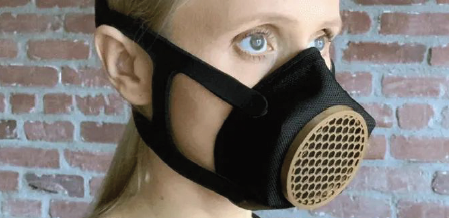New simulation standards can accelerate safety and performance assessments of 3D-printed personal protective equipment (PPE), especially during global emergencies: this was the starting point of our participation in the ASTM Workshop on Fast-Tracking Standards Development to Address PPR Shortages due to the Covid-19 Pandemic.
Covid-19 public health emergency caused an unprecedented shortage of PPE and other medical device parts. To overcome this crisis, many stakeholders identified 3D printing as a driving solution for the design and production of new devices directly at the point-of-care (POC).
Some examples of 3D-printing applications for Covid-19 are face masks, ventilator valves, respirators, metal respirator filters, nasopharyngeal swabs, door openers, isolation wards.
Assessing the safety of 3D-printed devices for health care providers and patients represents a difficult challenge for healthcare personnel missing manufacturing expertise, and it involves a trial-and-error approach.
To face this challenge, a public-private partnership among the FDA, VHA Innovation Ecosystem, NIH 3DPX and America Makes was created [1]. A large collection of community-submitted 3D-printable designs was preliminarily evaluated by a network of partners before any experimental assessment of their clinical appropriateness according to existing standards. InSilicoTrials supported this initiative – called Covid-19 Maker Challenge – by offering its cloud-based simulation platform to teams of inventors, letting them validate their designs very quickly through on cloud analysis.
In this evaluation, a key role was played by modeling and simulation (M&S). As recently reported, M&S can be used to assess the safety and performance of medical devices in a virtual environment, reproducing testing accepted by regulatory bodies [2, 3].
During the virtual ASTM Workshop, attended by engineers, scientists, medical professionals and regulators from different countries, we proposed the development of new computational Standard Test Methods to harmonize methodologies, provide specifications and guarantee quality for the application of Finite Element Analysis (FEA) or Computational Fluid Dynamics (CFD) in evaluations of the safety and performance of 3D-printed PPE (in analogy with successful outcomes such as the ASTM F2514–08 for vascular devices and the ASTM F2996–13, F3161–16, F3334–19 for orthopaedic devices).
These new standards, leveraging experience from community and advanced computational solutions, would allow POCs and manufacturers to rapidly test a large variety of designs and conditions otherwise untestable in practice, to accelerate time and reduce costs in device design and development, and to rapidly produce and provide safe devices to patients and caregivers.
[2] Morrison, Tina M et al. “Advancing Regulatory Science with Computational Modeling for Medical Devices at the FDA’s Office of Science and Engineering Laboratories.” Frontiers in medicine vol. 5 241. 25 Sep. 2018, https://doi.org/10.3389/fmed.2018.00241
[3] https://www.astm.org/standardization-news/?q=features/modeling-future-medical-devices-jf20.html
